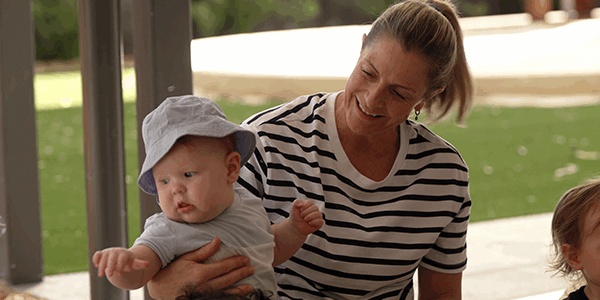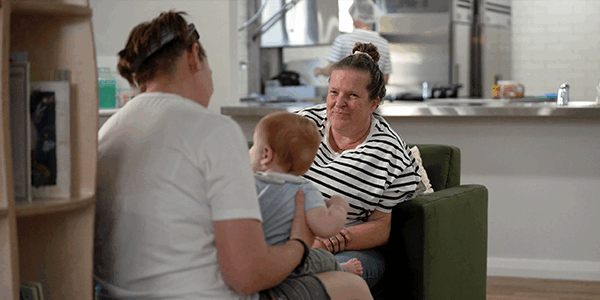We have all heard the term ‘children learn through play’ but what does this really mean? How valuable is it really towards your child’s ongoing development and what investment does this make towards preparing your child for school? Is play really at the foundation of education?
The Early Years Learning Framework (EYLF) defines play based learning as: A context for learning through which children organise and make sense of their social worlds, as they engage actively with people, objects and representations’ (DEEWR, 2009, p. 46).
Play is natural and spontaneous for children and it is central to forming relationships with others, understanding and experimenting with new objects, exploring and making sense of the world. As children play they learn to solve problems, to get along with others, use trial and error and integrated throughout play is an essential tool “communication”.
When Children…
- Smile and coo at people
- Shake a rattle
- Throw toys on the floor
- Look at picture books
- Roll a ball
- Cuddle a stuffed animal
- Build with blocks
- Dress up and play house
- Pretend to be firefighters
They Learn…
- How to engage others in interaction
- Their actions produce results; to distinguish sounds
- Principles of gravity; cause and effect
- Pictures represent real objects; words label objects – emergent literacy
- How to gain control of muscles; round stuff rolls
- To rely on their own ability to seek comfort; to nurture
- Concepts of size, weight, symmetry, number and balance; muscle control and coordination
- Small muscle, self-help skills; to recreate their own world
- Social roles; to work with others; share materials and communicate with other children

Our Approach to Positive Behaviour Guidance
The best play can occur when the adult gets involved alongside the child. Becoming part of a child’s play can sometimes take practice. Some parents feel that they need to give up “childish” things and “grow up.” However, this is not true for parents. Some suggestions for joining your child’s play include:
Observe.
Watch your child closely to learn what he or she can do and what they try to persist or challenge themselves in. Also, be aware of your child’s favorite activities.
Follow.
Join in and play with your child so that he or she knows you are interested in what he or she is doing. You can add to the complexity of the play; however, let your child be in control and determine the direction of play.
Be creative.
Let go of the adult idea that there is only one way to play with a toy.
Use toys in different ways, and you will be amazed at how many different ways you can play with one toy. Being creative will make playing more fun for you and your child.
“play is the highest form of research” Albert Einstein
Play has different connotation for children and adults. Adults are busy working all the time and they play for recreation to break the monotony of work. Children play all the time except when they are sleeping. Hence it can be said, “Play is to a child what work is to an adult”. In other words, “Play is child’s work.”




